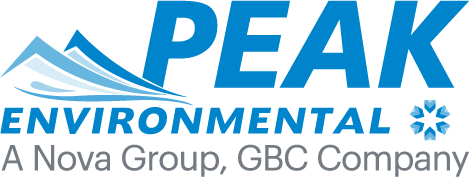Peak has been managing the investigation and remediation of several areas of concern (AOC), including chlorinated solvents in soil and groundwater at the primary Site AOC, at a 20-acre former manufacturing plant serving the electric industry from 1917 to 1995 when cessation of operations in 1995 triggered the NJ Industrial Site Recovery Act (“ISRA”). At this site, Peak’s responsibilities have included management of numerous soil, groundwater and vapor investigations at several areas of concern, including a degreasing area, a large cutting oil use area, a plating area, and other operations on a property underlain by historic fill. At the primary source area, a degreasing operation where chlorinated VOCs were released beneath a 100 year old active building, the previous consultant recommended demolition and excavation. When Peak was given responsibility for managing this project, previous remedial actions and data were evaluated and consolidated with more recent site data, receptor information, and physical characteristics to develop a conceptual site model to support remedial alternative analysis, and identify and pilot test remedial alternatives. In-situ chemical oxidation (ISCO) with soil vapor extraction was selected to treat the source area, and was designed, installed and operated successfully. The plume had migrated horizontally off Site and vertically into bedrock and this impact is included in a Classification Exception Area, which is monitored. The project includes significant third party involvement, most recently including a redevelopment, multiple local and state level permits and approvals, and RCRA hazardous waste management.
The degreasing area tasks and decisions included a remedial alternative evaluation, pilot testing and implementation of an active remediation system consisting of ozone injection with vapor extraction to collect vapors to protect interior occupied spaces. The remediation system was designed, installed, and operated with my oversight for approximately two years. Recommendations were made for shut down based on diminishing returns, and the team conducted a transition to insitu active bio-remediation injections, which have been completed and groundwater is currently being monitored. The vapor extraction system also continues to operate to protect indoor air quality.
A Cutting Oil Area consisted of a large operational space with wood-slat flooring, under which releases generated a separate-phase product plume (product). Product delineation, characterization and remedial alternative evaluations were completed. Physical properties of soil and LNAPL were determined, and API laboratory mobility tests were conducted on the product. The data supported the conclusion that the product had very low mobility, and the decision to recommend a containment option allowed by regulations was made to the client.
Historic fill was present under a large percentage of the property exterior, and capping or removal was required to prevent exposure to occupants. Removal was not practical and existing asphalt was not maintained and in very poor condition, rendering it not usable as an engineering control. The project team recommended evaluating available of attainment options to comply with regulatory standards, and the Thiessen Polygon method was applied. This method gained compliance for 90% of the historic fill area, reducing the requirements for installation of new asphalt, eliminating storm water management requirements, and minimizing long term inspection and maintenance requirements for this area.
Peak managed compliance with NJDEP requirements to evaluate the Site for emerging contaminants. Peak evaluated historical facility operations and determined that former plating operations justified groundwater sampling for per- and polyyfuoralalkyl substances (PFAS). PFAS were identified and Peak is managing the regulatory and technical requirements for this issue.
Peak provided numerous services for this project, including the following.
-
- Environmental Due Diligence
- Industrial Site Recovery Act
- LSRP Services
- Site Investigation Report
- Remedial Investigation Report
- Remedial Action Workplan
- Remedial Action
- Hazardous Materials Assessment
- Health and Safety Plan
- Waste Characterization and Management
- PFAS
- Remediation Lifecycle Cost Estimating

